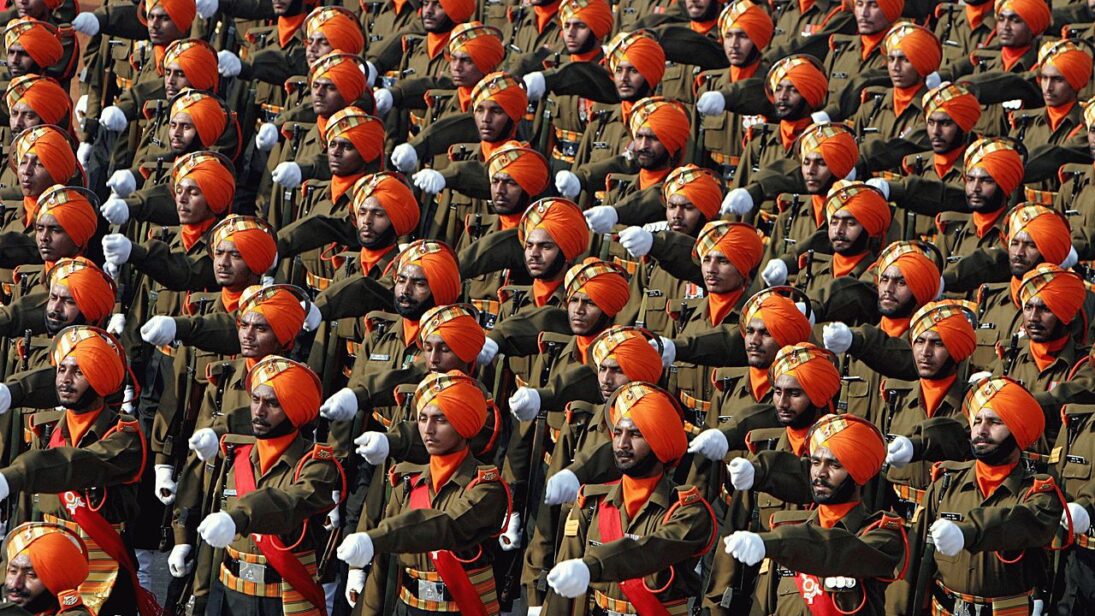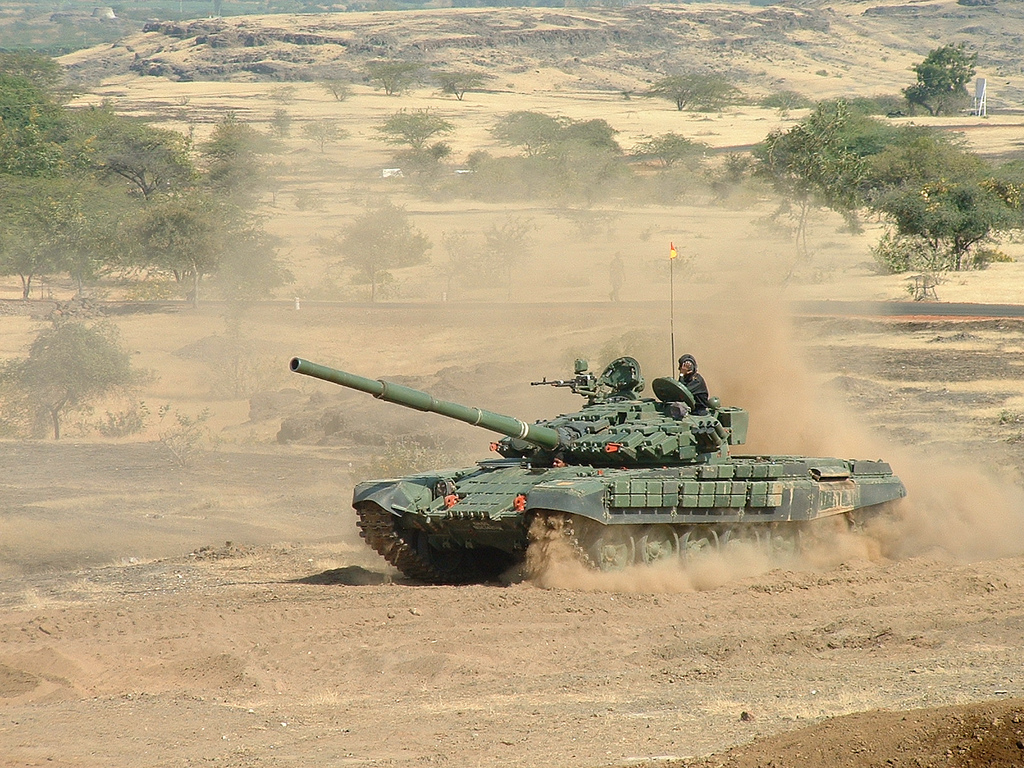
by Syed Ali Abbas, Amna Saqib
In his address at a recent conference in New Delhi, Indian Chief of Defense Staff (CDS) General Anil Chauhan stressed the importance of strengthening cohesion among India’s armed forces. These remarks came in the wake of several moves over the past year that indicate that New Delhi is setting the stage for the adoption of theaterization of its armed forces. This move towards unified military theater commands represents a significant shift in India’s warfare doctrine, which would improve its operational capabilities to conduct multi-domain operations.
India’s path to integrated theater commands has been fraught with challenges for years, including coordination complexities and resistance to the idea within its service branches. However, compelled by its security requirements, India has now decided to rectify the situation. This transition is not just an organizational adjustment but a comprehensive shift in how India plans to approach its future military operations and strategy, with significant implications for Pakistan.
As India transitions to a unified command structure, Pakistan needs to ensure it maintains deterrence vis-a-vis India and keep the regional equilibrium. In order to do so, Pakistan should contemplate enhancing its own joint military operations capabilities, allocating substantial resources towards modernizing its forces, and recalibrating its diplomatic approach.
Why Are Theater Commands Important?
Theater commands, essential for coordinating large-scale military operations, originated during World War II to address the complexities of managing operations across various theaters around the globe. This model integrated army, navy, and air force branches for unified strategic planning and execution, enhancing effectiveness across various theaters such as the Pacific and European fronts.
Over time, countries like the United States, China, and Russia have adapted their command structures to reflect their unique geopolitical contexts, military doctrines, and perceived security challenges. Today, the integrated (or “unified”) theater command (ITC) model — instead of separate command structures and procedures for each branch — facilitates agile, comprehensive responses to threats by enhancing strategic planning and resource utilization. This integrated approach does so by ensuring that each branch is aligned with national security objectives and regional dynamics. By pooling resources and streamlining communication, ITCs maximize operational effectiveness, enabling quicker responses to threats.
India’s Strategic Push Toward ITCs
India’s plan to establish three ITCs by 2025 is a strategic move, triggered by the enactment of the 2023 Inter-Services Organization Bill. These military reforms, in conjunction with the Integrated Battle Groups (IBGs) and the Cold Start Doctrine, are designed to enhance rapid deployment and operational efficiency, ensuring India’s readiness to respond to border threats and uphold conventional superiority swiftly. Previously, its military operations were distinctly service-centric, with the army, navy, and airforce each operating under separate command structures. This fragmentation led to delayed responses to crises, reduced interoperability among the forces, and suboptimal resource utilization, notably reducing the ability to respond jointly, quickly, and effectively. These became pronounced issues during tensions along both the Line of Control with Pakistan (LoC) and the Line of Actual Control with China (LAC). Although India asserts that it faces a significant threat from China and that its move towards ITCs is intended to deal with Beijing, its deployment and military leadership focus still remains heavily concentrated along the border with Pakistan. This is evidenced by the recent visit of the new Indian army chief to the LoC soon after taking command.
The Indian Kargil Review Committee report underscored theaterization as a solution to the long-standing coordination issues faced by the Indian armed forces, as witnessed during the Kargil War. The first ITC focuses on improving security and operational efficiency along the Pakistan frontier, headquartered in Jaipur, Rajasthan. The second is tasked with strengthening defense postures along the Chinese border, with its base in Lucknow, Uttar Pradesh. The third, a maritime ITC based in Thiruvananthapuram, aims to secure India’s maritime interests. This reorganization also includes the creation of a new Department of Military Affairs (DMA), overseen by the Chief of Defense Staff (CDS), which is already up and running. This is to facilitate greater integration across the armed forces, aligning with the “One Border, One Force” concept, a proposal for having a single dedicated force responsible for guarding each of India’s borders.
However, this shift towards a more integrated command structure has been plagued with challenges. Issues such as resource allocation, the type of command and control structures, and maintaining the strategic autonomy of each service complicate the creation of a cohesive framework for integration. Cultural differences between the services may also lead to resistance to this idea, impacting joint operations. Moreover, significant changes in training and technological integration are necessary, requiring both time and extensive resources.
Even so, if successfully executed, India’s ITCs could further aggravate the conventional military imbalance between India and Pakistan by providing India with a more agile, coordinated, and technologically advanced military.

Response Options for Pakistan
To plan against any potential Indian incursions, Pakistan has already formulated the “Quid Pro Quo Plus” strategy, underpinned by a high state of readiness, and the potential of rapid, strategic strikes at unexpected times and places. These initiatives indicate Pakistan’s commitment to effectively deterring Indian advances, maintaining the regional power balance, and preventing escalation into a broader conflict.
However, an integrated theater command structure might allow India to more quickly, effectively, and stealthily deploy forces against Pakistan, before it can mount a timely response. This transition may lead Pakistani decisionmakers to perceive a change in the strategic balance and respond accordingly. Pakistan’s military would need to conduct a comprehensive re-evaluation to address this new reality of confronting an adversary with a more integrated and agile military force. These reforms would involve a reassessment of capabilities, threat perceptions, operational strategies, and tactical approaches. Pakistan’s overall goal should be to enhance coordination among its army, navy, and air force to ensure a unified response to potential threats in this new fast-paced and technologically complex environment.
Enhancing intelligence and surveillance capabilities to monitor and anticipate Indian military movements is essential for supporting Pakistan’s preparedness for both conventional and other forms of warfare. Such preparation could strain Pakistan’s already precarious economic stability, but it is essential for adapting to modern forms of warfare like cyber, electronic, and asymmetric warfare. More advanced surveillance systems would offer enhanced situational awareness, enabling Pakistan to detect potential cross-border threats earlier and more accurately. Advanced weaponry, including Unmanned Aerial Vehicles (UAVs), can provide Pakistan with a cost-effective means of conducting reconnaissance, surveillance, and precision strikes, thereby enhancing its deterrence posture against conventional threats.
Alongside intelligence and weapon advancements, Pakistan is already investing in extensive scenario planning and wargaming to anticipate potential conflicts under this new strategic environment and prepare effective strategies for deterrence and de-escalation. This is a welcome move and should take into account the impact of Indian theaterization.
Finally, an essential part of Pakistan’s response to India’s military advancements should be proactive international diplomacy. Building partnerships and engaging with regional and global powers are important to ensure that Pakistan’s concerns are understood and considered by the international community. This diplomatic engagement is vital to mitigating the inherent escalation risks associated with advanced military capabilities that shorten decisionmaking time frames. Robust diplomatic initiatives and proactive international engagement are critical for de-escalating tensions and building regional consensus on stability. These efforts directly mitigate the risks associated with India’s military restructuring and promoting a balanced, stable security environment in South Asia.
source : southasianvoices
